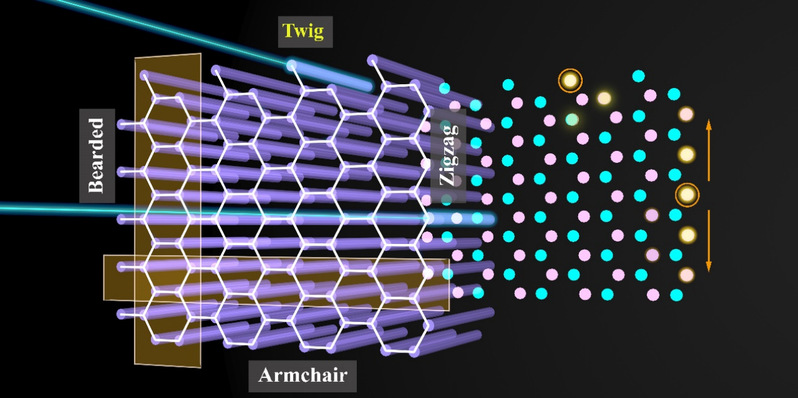The Fourth Fundamental Edge in Graphene Unveiled with Photonic Lattices
A team from Nankai University in China, led by Zhigang Chen and Jingjun Xu, has made an important breakthrough in the study of topological edge states. Their findings were recently published in a top-rated journal Physical Review Letters.
Graphene, a remarkable carbon-based material, has garnered significant attention due to its exceptional properties and vast range of applications. Its two-dimensional honeycomb lattice (HCL) structure along with its unique Dirac cone in momentum space give rise to extraordinary mechanical, thermal, and electrical properties, making it a versatile material for various technological advancements. One intriguing aspect of graphene is its edge-dependent electronic states, which have been a subject of extensive research over the decades and provided valuable insights into the fundamental physics of two-dimensional materials. By studying the behavior of electrons localized near the edges, researchers can gain a deeper understanding of quantum confinement effects and electron transport in low-dimensional systems.
Graphene edge states arise from the interplay between the lattice structure and the confinement of electrons along the edges. Previously known edge configurations include armchair, zigzag, and bearded edges, but only the latter two in the normal structure feature edge states. One of the key aspects of graphene edge states, including those in artificial graphene systems, is their topological nature. Topological band theory provides a powerful framework for understanding and classifying the electronic properties of materials. In the context of graphene, topological edge states protected by nontrivial winding are characterized by their robustness against perturbations and disorders. Thus far, a common belief is that there are only three generic types of edges (armchair, zigzag, and bearded) in HCLs. In this work, the research team challenged this traditional belief for the first time.
The researchers explored the concept of the bulk-boundary correspondence in an HCL structure and made an intriguing discovery: the three traditional edges of the HCL are not complete! Instead, they found that the formation of an edge is intricately linked to the selection of the appropriate primitive cell, rather than just simple lattice cutting. This led to the identification of a new edge, which they called the “twig edge” based on its shape, which completes the set of edge conditions alongside the well-known edges. Furthermore, the existence of edge states is also supported by nontrivial winding number of the bulk Hamiltonian. To experimentally demonstrate the novel edge state, Shiqi Xia and Yongsheng Liang, the two leading co-authors, designed and fabricated a photonic graphene lattice with the twig edge configuration using a laser-writing technique, which closely mimics the behavior of electrons in graphene. Remarkably, they also discovered soliton-like compact edge states that exhibited both flat band behavior and topological features- never seen before in other graphene edges. These compact edge states are confined within a single supercell along the boundary, without the need to employ defects or nonlinearities. Their observation further emphasized the unique nature and characteristics of the twig-shaped edge states.
“These findings will broaden our understanding of graphene edge states and offer new possibilities for wave localization in artificial materials with Dirac-like properties”. said Daohong Song, one of corresponding authors. “The discovery of twig-shaped edge states holds great potential for the development of advanced photonic and electronic devices, as well as the exploration of topological phenomena in condensed matter physics”.
The research provides valuable insights into the intricate relationship between lattice structure, edge formation, and the emergence of edge states in graphene-like materials. The work contributes to the ongoing advancements in topological photonics such as the valley Hall effect, energy confinement, and higher-order topological insulators, and may lead to new possibilities for unconventional photonic applications as well as graphene-inspired technologies.

Caption: Schematic illustration of a honeycomb waveguide array and its equivalent graphene lattice structure, exhibiting four different edge conditions: bearded, armchair, zigzag and twig edges. Two shaded rectangles illustrate supercells for the bearded/zigzag (horizontal) and twig/armchair (vertical) edges. A probe beam aiming at single site of the twig (zigzag) edge is compactly localized (extended) at the edge, indicated by bright yellow dots in the projected honeycomb lattice.
About this study
The paper entitled “photonic realization of a generic type of graphene edge states exhibiting topological flat band” by Shiqi Xia, Yongsheng Liang, Liqin Tang, Daohong Song, Jingjun Xu, Zhigang Chen has been published in the journal Physical Review Letters.
Link to the paper: https://journals.aps.org/prl/abstract/10.1103/PhysRevLett.131.013804









